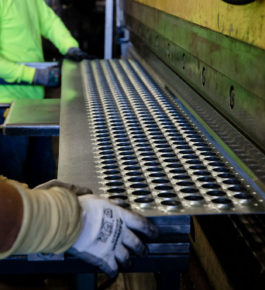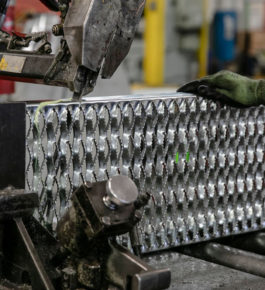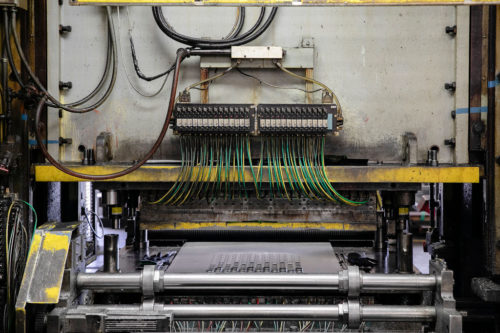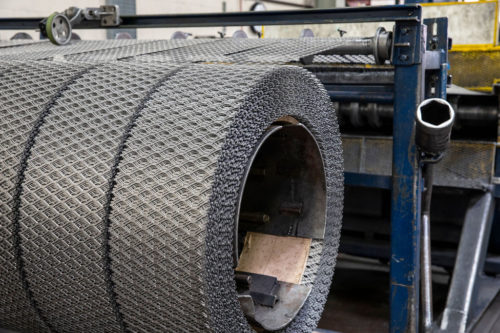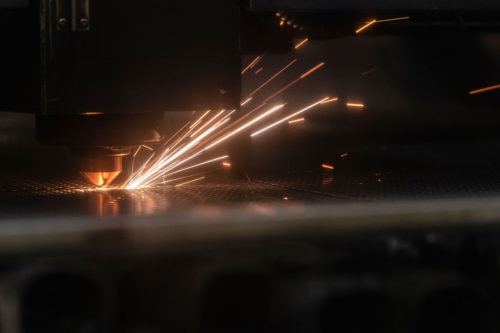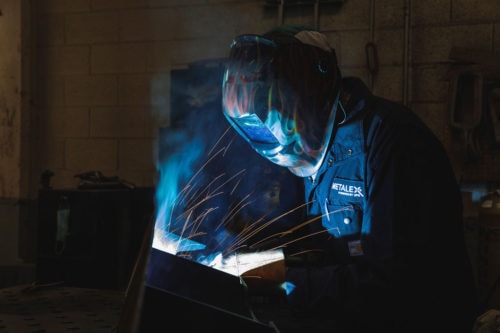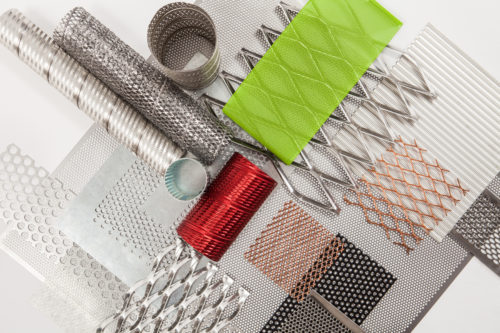At Metalex®, we are committed to providing quality metal products that meet and exceed industry standards and customer expectations. We also offer an extensive range of secondary operations to ensure that your finished products meet even the most stringent specifications.
Secondary Operations for Expanded Metal, Perforated Metal & Safety Grating
Stamping
We provide quality stamping services using both standard and custom dies. Our specialized stamping equipment uses precisely measured metal dies and compressive punches to stamp desired shapes. At Metalex®, we use the stamping process to create components from expanded metal, but it can be used to shape perforated and other metal products, as necessary. Products manufactured using this method include picnic furniture, filters, rail car parts, and vehicle components.
Forming
Forming uses hydraulic or mechanical pressure to deform stock metal to create the desired shape. At Metalex®, we have an extensive fleet of 15-20 brake presses available to produce quality formed components for high-speed and high-volume production runs. Some products we have produced using our forming methods include stair steps, ladder rungs, safety grating platforms for rail cars, and other industrial applications.
Shearing
Shearing is a metal fabrication process that uses two blades to cut pre-rolled sheet metal to the desired length and width. At Metalex®, we use this method on safety grating, expanded metal, and perforated metal. It is used to quickly and accurately cut straight edges for flat components, rods, and pipes, and is ideal for high volume production of uniform components.
Saw Cutting
Saw cutting uses a mechanized circular or band saw to cut sheets, tubes, pipes, and bars to the desired length. At Metalex®, we frequently use saw cutting for pre-shaped channels and tubes. Our state-of-the-art saw cutting equipment is highly mechanized for accurate, repeatable cuts on a wide variety of products. We are also pleased to offer deburring services to smooth the rough edges left by the saw cutting process.
Laser Cutting
At Metalex®, we use the latest CO2 laser technology to cut, shape, and engrave intricate and detailed components. The process is highly versatile and can be used to cut virtually any pattern. This makes it particularly useful for unusually shaped and complex components. With CNC programming, our laser cutter provides quick results with an exceptional degree of precision.
Plasma Cutting
At Metalex®, we use only the latest technology. Our combination plasma turret press allows us to use state-of-the-art plasma cutting technology and a punch press simultaneously to produce exceptionally accurate components with the utmost speed and efficiency. Plasma cutting uses an electrical charge to heat compressed gas to create a thin, precise stream of plasma that can be used to cut detailed and complex shapes.
MIG Welding
Metalex® is pleased to offer a range of welding techniques to fuse multiple components together. MIG welding is used primarily for our safety grating products. We often weld end caps to the end of platforms, or we’ll weld reinforcement bars underneath a platform to provide the steps or the platforms with more strength.
Secondary Operations for Perforated Tubes
Rolling
Metal rolling is the first step in the manufacturing process for an array of components. Using heat and pressure, the raw metal is rolled into a tube of uniform thickness. It can then be cut or sheared to meet the particular project specifications.
Springing
Our springing process includes applying a wire inside a tube in a spiral cut to strengthen the tube. To ensure an accurate fit, the tube is painstakingly notched in a spiral pattern that will hold the wire in place. We typically employ this process for large diameter tubes in filtration applications.
TIG Welding
Welding performed via a tungsten rod that creates a solid seam weld, a skip weld, or a spot weld on our perforated tubes.
Finishing Options
Anodizing
Metalex® is pleased to collaborate with industry leaders for a variety of anodizing, electropolishing, plating and coating processes. Anodizing uses an electrochemical process to coat aluminum and other non-ferrous metals with a protective oxidized layer. The process allows oxygen to bond with the substrate material, creating a fully integrated surface coating that prevents rust and corrosion.
Electropolishing
Electropolishing creates smooth, shiny finishes on a completed component. It is particularly useful for delicate and detailed components that are difficult to polish or deburr using traditional tools.
Galvanizing
Galvanizing adds a zinc coating to the substrate material of the finished component. The zinc protects the underlying material from oxidation and corrosion.
Painting
We partner with industry experts to provide the highest quality wet and powder coat paint options. Not only do our quality custom paint services provide your product with a professional on-brand finish, you can rely on specialty paints to provide protection from moisture, sunlight, abrasion, and other harsh environmental conditions.
Plating and Coating
Metal plating and coating can be composed of a variety of metallic materials, including nickel, copper, zinc, and stainless steel. The substrate material is dipped in a solution that contains the desired coating, thereby depositing the material on the surface of the component. The coating may be decorative, but can also be used to protect the material from corrosion, abrasion, and wear.
Metalex® Secondary Operations
Contact our experts to learn more about our selection of secondary metalworking services.
